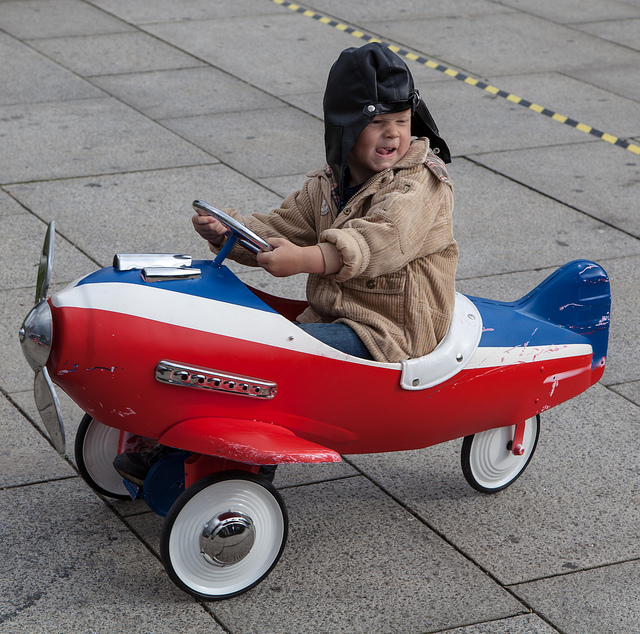Traveling with children can be a joy or a nightmare. Even the happiest kid is prone to the occasional meltdown, and it’s no picnic when it happens in an enclosed cabin. By understanding why children aren’t as gracious as they should be during chartered flights, you can take steps to avoid tantrums and ear-piercing screeches (or at least settle them quickly). Make the most out of your next private jet flight with young children.
Why Children Throw Fits on Planes
- The situation is new and scary: Regardless how much a child loves watching planes from the ground, being in a private jet (or any aircraft) for the first time can be terrifying for an inexperienced young passenger. Planes are loud, especially if your ears are sensitive. There are a lot of new people telling a tot what to do and not do. A child might feel trapped in the enclosed space. A parent’s stress and nerves might also make a child feel nervous.
- Airplane ear: Airplane ear is the stress your eardrum and middle ear feel because of the air pressure in a cabin. Individuals tend to experience it most when an aircraft ascends or descends. Airplane ear can occur in one or both ears and cause moderate to severe discomfort, tinnitus or vertigo. Children, toddlers, and infants are more vulnerable to airplane ear because they have a small Eustachian tube.
- Not knowing how to behave: An airplane might be a new environment for a little one. As a result, they won’t automatically know what type of behavior is acceptable and what isn’t.
- Boredom: A kid who’s bored might act out to entertain them self.
Tips for Flying Private with Kids
- Practice: If your little one has never been on a plane, ask the aircraft management company for a tour of a similar aircraft to help eliminate the fear of the unknown. This allows your child to experience what it’s like to walk on a noisy tarmac, sit in a seat, buckle a seatbelt, and be in an enclosed space. While you’re in the plane, explain what lifting-off and touching-down will feel like.
- Have clear expectations: Explain to your child what appropriate behavior on an aircraft looks like. For example, everyone buckles their seatbelt, stays in their seats when the captain instructs, is polite to flight attendants and other crew members, and uses their words when they want something instead of scream. Kicking chairs and running around is not allowed. Then explain why the rules are in place: they help passengers stay safe and ensure everyone has a nice flight. When kids understand the reasons for rules, they’re more likely to follow them. It may be a good idea to explain the logical consequences for misbehavior (e.g., If you misbehave during this flight, you won’t be able to come with us on our next vacation.).
- Plan for airplane ear: If your child has never been on a plane, make a plan to help curb airplane ear if it occurs. Your plan can include teaching your child to yawn, giving them a low- or no-sugar snack to chew on to open the Eustachian tubes, and using filtered earplugs. Talk to a pediatrician about eardrops or other solutions that may help. Also, avoid vaccinations at least a week before air travel so you have plenty of time to deal with any side effects.
- Bring something familiar: A favorite blanket, teddy bear or toy might help a child feel more secure during a flight.
- Hydration: Dehydration can alter a passenger’s mood, and it’s easy to get dehydrated during a flight. Ensure your little one has plenty to drink.
- Bust boredom:
- Play cards: Teach your little one how to play games like Go Fish or Crazy Eights.
- Make plans: If your child is old enough to read, take travel books on the flight and ask them to suggest places to visit, activities and restaurants.
- Bring books: When you fly private, you don’t have to worry as much about carry-on luggage and weight limits. Pack various activity books to keep your child entertained. Pack interesting crayons or markers and present them as a surprise during the flight. Retell classic stories with finger puppets or invent new plots.
- Travel games: Many classic board games have a travel version. Bring a couple along for some quality family time. In addition to board games, get creative with pipe cleaner sculptures, chopstick and cotton ball competitions, and kid-friendly crafts.
- Origami: Pack square sheets of paper and an origami book for beginners. Learn how to read the diagrams together, which generally use symbols instead of words, and praise your child for learning to make their own paper toys.
- Bring items for the entertainment system: If an aircraft is equipped with an entertainment system, request or bring child-friendly movies, music, and audiobooks. If your child is old enough to use a tablet or laptop, load the device with new games.
- Review photos: On your return flight, have a slideshow with photos you took during your trip.

